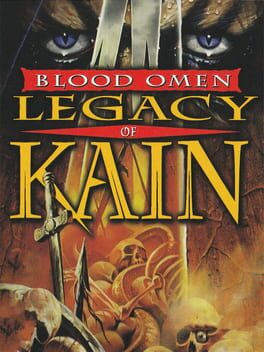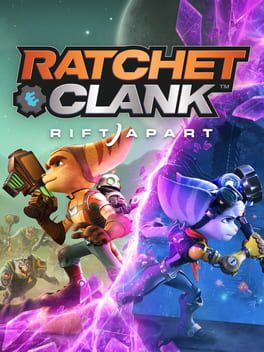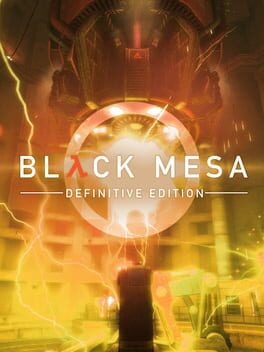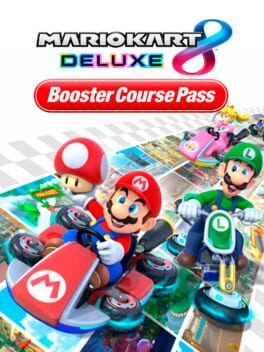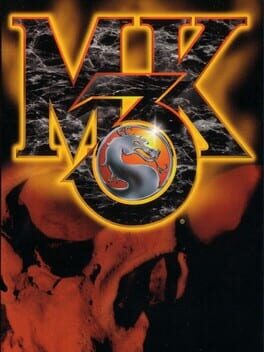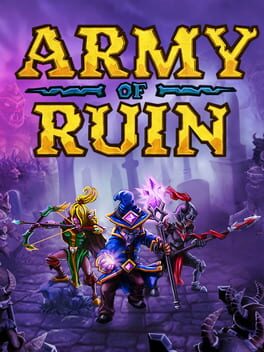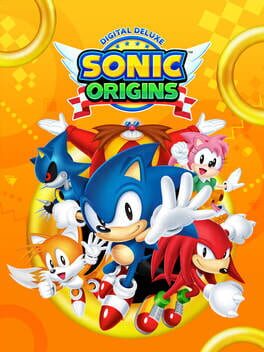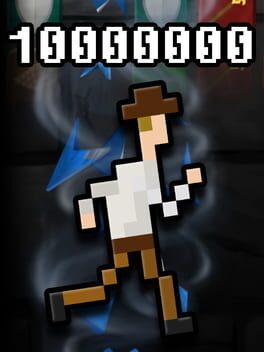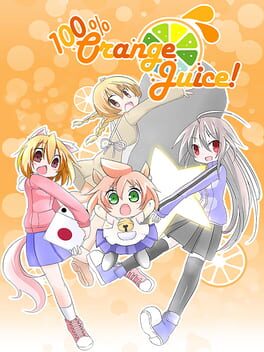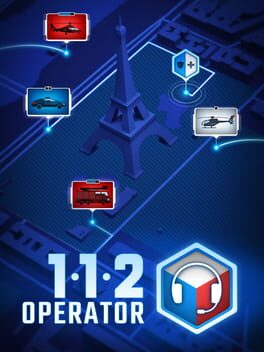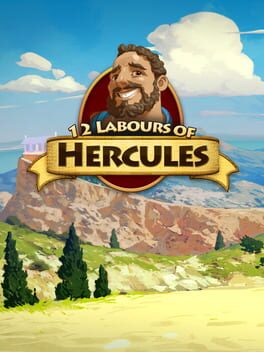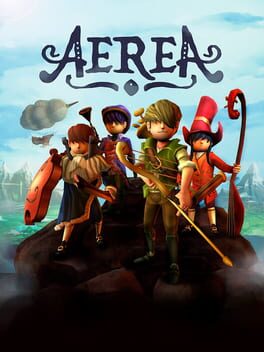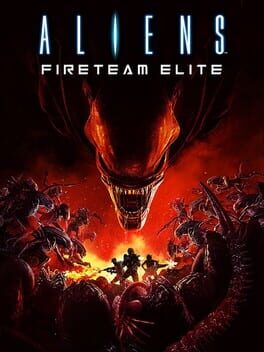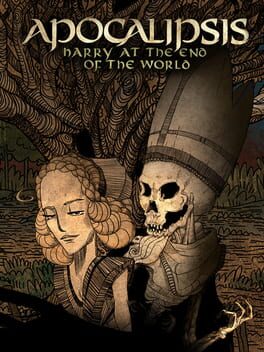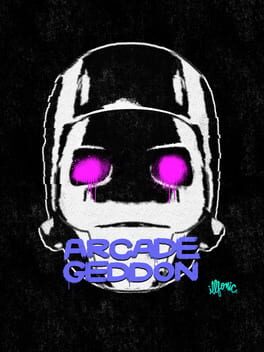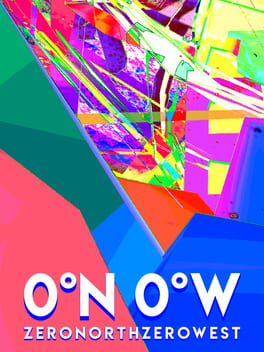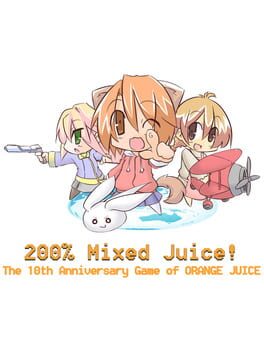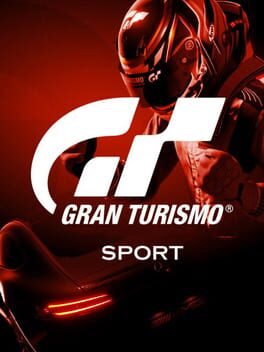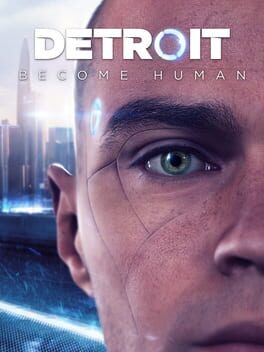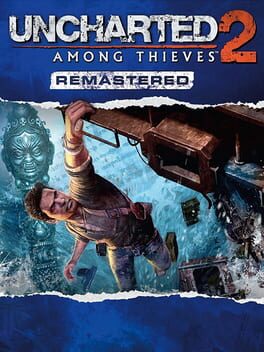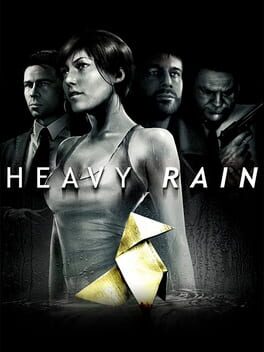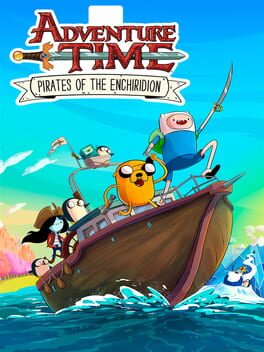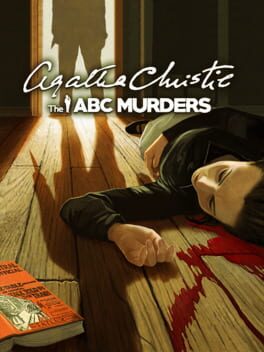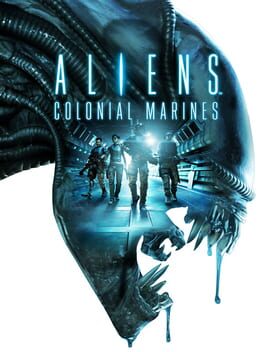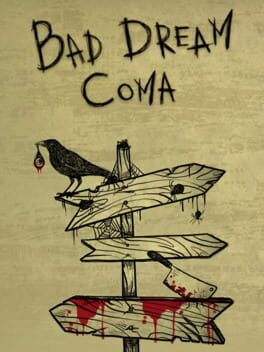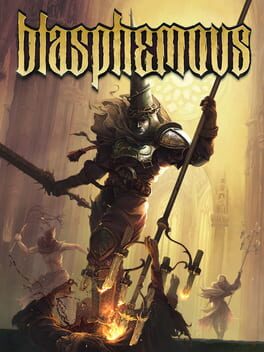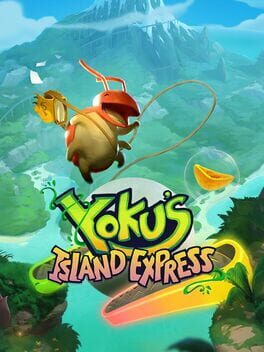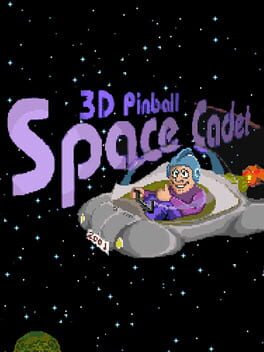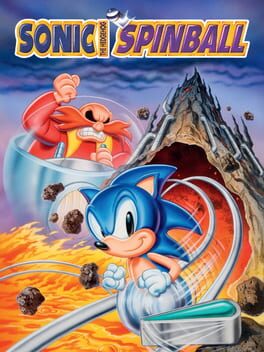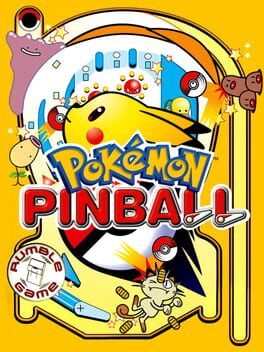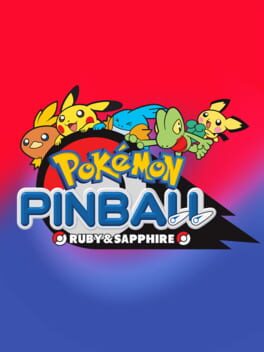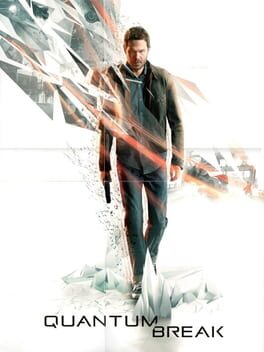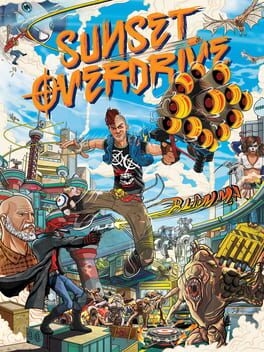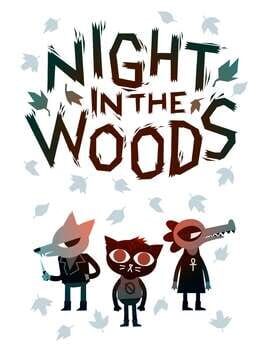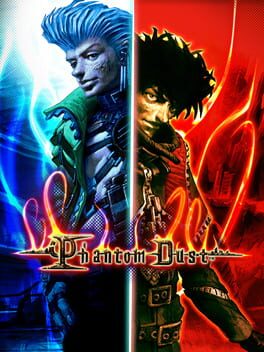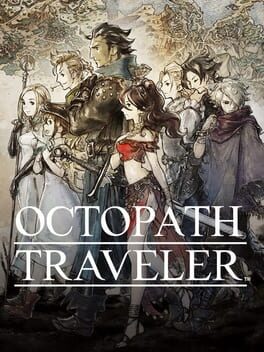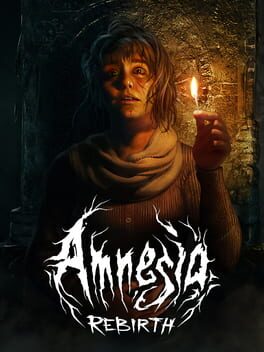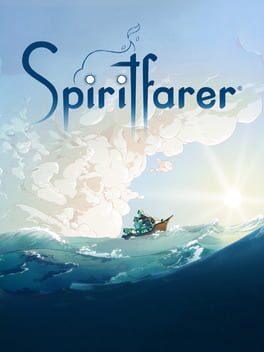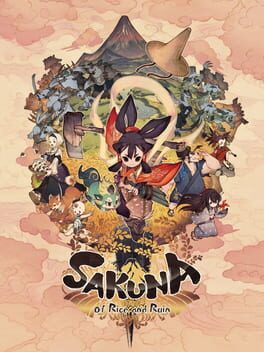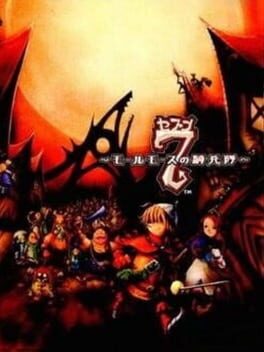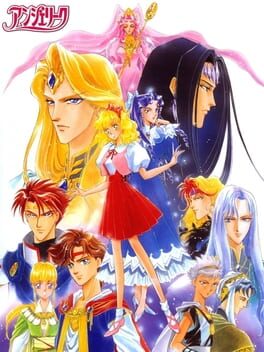3992 reviews liked by Merkur_Schroeder
I have been putting of actually releasing a review for a while now; for many reasons, but I will now do my best to force myself into actually releasing this one; in that way me actually releasing a review I wrote for once, is kind of similar to my experience with the Legacy of Kain franchise, which I’ve tried to get into for a while now.
I’ve had begun playing Soul Reaver, the second instalment in the series, for about an hour in 2022, but had set it off until now, because I had just completed Link’s Awakening and usually need some time between two Zelda(-like) games, to deflate for a bit, and because I knew, I wanted to experience the entire series (or at least the ones I still can cough, cough Huge thanks to @Detectivefail for helping me fix this hyperlink), I wanted to start with the first entry in the series, and that brings me here Blood Omen: Legacy of Kain.
If you have ever heard about this series, but never experienced it by yourself, you have probably been exposed to tons of praise for their story, which is mostly deserved, being one of the earlier examples of an action game that cares about these aspects, while reportedly bringing on great voice talent to deliver it (I wouldn’t know, I played the German version).
But the game unfortunately fumbles when it comes to actually playing it.
One of the first things you will notice about Blood Omen is that it is surprisingly somewhat open world. There are still obstacles in the way, as to limit your progress to closed of areas, but the order in which and whether you even complete certain dungeons is let completely up to you, go ahead and call it a Metroid-Vania if you will.
Your gameplay loop will look something like this:
”Find a vista-marker/Ariel telling you where the next big dungeon is, which you can at that point either fast-travel to directly, or preferably walk to; finding smaller dungeons, Blood Fountains, villages and miscellaneous pick-ups along the way; beating said big dungeon and defeating the ‘boss’ (I will talk about these a bit later); and then maybe backtrack.”
I don’t have a problem with this loop in theory, as it is constantly engaging and doesn’t get repetitive, but this basis will start to show its cracks if you look at it a bit closer.
First of combat, which is probably the aspect of Blood Omen that you will spend the most time with.
At first glance this games combat system might seem surprisingly fleshed out, with you being able to select between multiple armor sets, weapons, spells, items and transformations, which Kain will gradually be unlocking on his adventure through Nosgoth, but you will be discovering fairly quick that just using the Repel Shield and your strongest weapon (regular-/flame- sword) is just the most effective strategy.
If you don’t remember to renew your shield and take damage for some reason don’t worry, because Kain is not only almost as spongy as some of the regular enemies in the late game, but you will most likely have acquired enough Hearts of Darkness (this games instant revives), to never actually be in any amount of danger.
The only way I actually lost health later was by walking through water or waiting for my magic gauge to fill up again after using spells or such; you will do this a lot and it takes multiple minutes for most of the game, as the magic- and health- bar kind of work as opposites of each other.
Not only do you need one to keep yourself alive, while you use the other one to take them, but your health bar will slowly drain with time, while your magic gauge will refill, which could’ve been a really cool concept if it didn’t force you to use spells (which drain magic) and transformations (which also drain magic), for puzzles and straight up locking you progress if you don't refill it so often; which to be fair is somewhat remedied by the regular magic-pick-ups towards the end of the game and this system being easily cheesed as you can just either use one of your hearts of darkness, refilling Kain’s health or switch to the axes and the Flesh Armor, which automatically fills up your health every time you defeat a living enemy.
This games swordplay in general was just not very enjoyable to me. The game sometimes fails to signify if you are currently even damaging an enemy, which gets worse with boss fights and later way too spongy types of enemies. There is one boss fight, in which you first must defeat a guy that destroys the ground beneath you, but just ignores you otherwise, even if you hit him.
Kain will sometimes just not feel like attacking and instead yell out “Vae Victis!” and pose when you press the button to attack; this will also be a common occurrence and happen at the exact moments you don’t want it to happen during your playthrough.
You can skip this next paragraph if you want to, as it solely hinges on me talking about a weird link to another completely different game, I had made while playing, which is probably only interesting to me.
There is a point relatively early into the game where you acquire a lightning spell, which you can either use as a projectile attack or activating switches across gaps, which was the exact point where I drew a weird similarity between Blood Omen: Legacy of Kain and another game I have played through and reviewed almost two years ago now, which is strangely similar in terms of puzzles, combat and the sort , being Lego Knights Kingdom. The connection is made even weirder by the fact that one of that games lead designers Alastair Cornish apparently had some kind of role within Eidos, which published the Legacy of Kain series and being credited in the game Nosgoth, the controversial last entry in the series. Just thought this was interesting enough for me, to keep in the review.
Now the game doesn’t only rely on its swordplay for combat, as already mentioned. There are some more or less useful spells, the Repel Shield probably getting the most use during yours and definitely during my playtime. Unfortunately, most other spells are severely outclassed by the items, whose power should be regulated by them being single use, but they are just so abundant that you will never be in a shortage of them.
You can only chose one spell, item or transformation to be used at a time, if you want to change them, you can either put up to four of each in a quick-menu, which were actually really tedious to access for me, because I for some reason decided to play this on the PS Vita and am now probably the only person to ever do so, as accessing said menus (or the map) requires you to hit the touch buttons on the back, which I didn’t even know existed and are situated exactly where you want to rest your hands.
Putting spells in and out of your quick menu will also be greeted with a loading screen, so I never really used any spells outside of the ones I needed for puzzles or again, the repel shield. It goes without saying that the same issue also applies to the items.
Moving around the world also is awfully clunky and slow. The devs knew this and tried to remedy this problem by introducing the Wolf-Transformation, which is faster, but weaker in combat and even clunkier to control, but it sometimes allows you to leap over small gaps; it sometimes also might just decide to not do this, but it also has the drawback of using up your magic, which is one better used in combat and two means that if you magic gauge is depleted, you won’t be able to use this transformation even if you need to, so you will just have to wait again.
There is also the Mist-Transformation, whose only use cases are walking over conveniently placed patches of water or moving through hard to see cracks in the wall, while using up your magic while being even less useful than the wolf and leaving you open to enemy attacks, while giving you no way to counterattack.
The Bat-Transformation is the only one that doesn’t use up your magic and thus is the best one. It lets you fast-travel across the world to various Bat-Beacons scattered around Nosgoth.
The final transformations name is offensive and will for that reason not be mentioned by name here. I also didn’t ever feel the need to use it. If I had to say something interesting about it, then I would like to mention it being the only one you can upgrade (as far as I know) and is notable for breaking my game when I used it in the upgraded state, luckily not enough to where I couldn’t finish it as this takes place during the last hour of playtime.
Still on the topic of moving around the world, this game visually doesn’t hold up to a point where it made it hard to differentiate between things you can or can not interact with. For example, you will usually not be able to move behind a roof, but there was at least one where you could do it and collect optional items. This isn’t the end of the world but did impair my experience with the game.
~1/3rd of the screen will be used up by really nice looking, but distracting UI.
I did enjoy the janky, early 3D cutscenes though.
I won’t really talk about the contents of the story in this review as the only things you need to know are, it isn’t really that present for most of the game, but when it is, it is a nice break of pace and fairly good, while not reaching the heights it will in later entries. It is the one thing I would recommend you play this game for, outside of historical relevance.
I will be honest. I didn’t really enjoy Blood Omen: Legacy of Kain as you might’ve noticed, but that doesn’t detract from its significance to the development of this medium. Completing it also made me pick up Soul Reaver again, which I have mostly really enjoyed so far.
If anything, I won’t ever forget my time with this first entry in the Legacy of Kain franchise.
I’ve had begun playing Soul Reaver, the second instalment in the series, for about an hour in 2022, but had set it off until now, because I had just completed Link’s Awakening and usually need some time between two Zelda(-like) games, to deflate for a bit, and because I knew, I wanted to experience the entire series (or at least the ones I still can cough, cough Huge thanks to @Detectivefail for helping me fix this hyperlink), I wanted to start with the first entry in the series, and that brings me here Blood Omen: Legacy of Kain.
If you have ever heard about this series, but never experienced it by yourself, you have probably been exposed to tons of praise for their story, which is mostly deserved, being one of the earlier examples of an action game that cares about these aspects, while reportedly bringing on great voice talent to deliver it (I wouldn’t know, I played the German version).
But the game unfortunately fumbles when it comes to actually playing it.
One of the first things you will notice about Blood Omen is that it is surprisingly somewhat open world. There are still obstacles in the way, as to limit your progress to closed of areas, but the order in which and whether you even complete certain dungeons is let completely up to you, go ahead and call it a Metroid-Vania if you will.
Your gameplay loop will look something like this:
”Find a vista-marker/Ariel telling you where the next big dungeon is, which you can at that point either fast-travel to directly, or preferably walk to; finding smaller dungeons, Blood Fountains, villages and miscellaneous pick-ups along the way; beating said big dungeon and defeating the ‘boss’ (I will talk about these a bit later); and then maybe backtrack.”
I don’t have a problem with this loop in theory, as it is constantly engaging and doesn’t get repetitive, but this basis will start to show its cracks if you look at it a bit closer.
First of combat, which is probably the aspect of Blood Omen that you will spend the most time with.
At first glance this games combat system might seem surprisingly fleshed out, with you being able to select between multiple armor sets, weapons, spells, items and transformations, which Kain will gradually be unlocking on his adventure through Nosgoth, but you will be discovering fairly quick that just using the Repel Shield and your strongest weapon (regular-/flame- sword) is just the most effective strategy.
If you don’t remember to renew your shield and take damage for some reason don’t worry, because Kain is not only almost as spongy as some of the regular enemies in the late game, but you will most likely have acquired enough Hearts of Darkness (this games instant revives), to never actually be in any amount of danger.
The only way I actually lost health later was by walking through water or waiting for my magic gauge to fill up again after using spells or such; you will do this a lot and it takes multiple minutes for most of the game, as the magic- and health- bar kind of work as opposites of each other.
Not only do you need one to keep yourself alive, while you use the other one to take them, but your health bar will slowly drain with time, while your magic gauge will refill, which could’ve been a really cool concept if it didn’t force you to use spells (which drain magic) and transformations (which also drain magic), for puzzles and straight up locking you progress if you don't refill it so often; which to be fair is somewhat remedied by the regular magic-pick-ups towards the end of the game and this system being easily cheesed as you can just either use one of your hearts of darkness, refilling Kain’s health or switch to the axes and the Flesh Armor, which automatically fills up your health every time you defeat a living enemy.
This games swordplay in general was just not very enjoyable to me. The game sometimes fails to signify if you are currently even damaging an enemy, which gets worse with boss fights and later way too spongy types of enemies. There is one boss fight, in which you first must defeat a guy that destroys the ground beneath you, but just ignores you otherwise, even if you hit him.
Kain will sometimes just not feel like attacking and instead yell out “Vae Victis!” and pose when you press the button to attack; this will also be a common occurrence and happen at the exact moments you don’t want it to happen during your playthrough.
You can skip this next paragraph if you want to, as it solely hinges on me talking about a weird link to another completely different game, I had made while playing, which is probably only interesting to me.
There is a point relatively early into the game where you acquire a lightning spell, which you can either use as a projectile attack or activating switches across gaps, which was the exact point where I drew a weird similarity between Blood Omen: Legacy of Kain and another game I have played through and reviewed almost two years ago now, which is strangely similar in terms of puzzles, combat and the sort , being Lego Knights Kingdom. The connection is made even weirder by the fact that one of that games lead designers Alastair Cornish apparently had some kind of role within Eidos, which published the Legacy of Kain series and being credited in the game Nosgoth, the controversial last entry in the series. Just thought this was interesting enough for me, to keep in the review.
Now the game doesn’t only rely on its swordplay for combat, as already mentioned. There are some more or less useful spells, the Repel Shield probably getting the most use during yours and definitely during my playtime. Unfortunately, most other spells are severely outclassed by the items, whose power should be regulated by them being single use, but they are just so abundant that you will never be in a shortage of them.
You can only chose one spell, item or transformation to be used at a time, if you want to change them, you can either put up to four of each in a quick-menu, which were actually really tedious to access for me, because I for some reason decided to play this on the PS Vita and am now probably the only person to ever do so, as accessing said menus (or the map) requires you to hit the touch buttons on the back, which I didn’t even know existed and are situated exactly where you want to rest your hands.
Putting spells in and out of your quick menu will also be greeted with a loading screen, so I never really used any spells outside of the ones I needed for puzzles or again, the repel shield. It goes without saying that the same issue also applies to the items.
Moving around the world also is awfully clunky and slow. The devs knew this and tried to remedy this problem by introducing the Wolf-Transformation, which is faster, but weaker in combat and even clunkier to control, but it sometimes allows you to leap over small gaps; it sometimes also might just decide to not do this, but it also has the drawback of using up your magic, which is one better used in combat and two means that if you magic gauge is depleted, you won’t be able to use this transformation even if you need to, so you will just have to wait again.
There is also the Mist-Transformation, whose only use cases are walking over conveniently placed patches of water or moving through hard to see cracks in the wall, while using up your magic while being even less useful than the wolf and leaving you open to enemy attacks, while giving you no way to counterattack.
The Bat-Transformation is the only one that doesn’t use up your magic and thus is the best one. It lets you fast-travel across the world to various Bat-Beacons scattered around Nosgoth.
The final transformations name is offensive and will for that reason not be mentioned by name here. I also didn’t ever feel the need to use it. If I had to say something interesting about it, then I would like to mention it being the only one you can upgrade (as far as I know) and is notable for breaking my game when I used it in the upgraded state, luckily not enough to where I couldn’t finish it as this takes place during the last hour of playtime.
Still on the topic of moving around the world, this game visually doesn’t hold up to a point where it made it hard to differentiate between things you can or can not interact with. For example, you will usually not be able to move behind a roof, but there was at least one where you could do it and collect optional items. This isn’t the end of the world but did impair my experience with the game.
~1/3rd of the screen will be used up by really nice looking, but distracting UI.
I did enjoy the janky, early 3D cutscenes though.
I won’t really talk about the contents of the story in this review as the only things you need to know are, it isn’t really that present for most of the game, but when it is, it is a nice break of pace and fairly good, while not reaching the heights it will in later entries. It is the one thing I would recommend you play this game for, outside of historical relevance.
I will be honest. I didn’t really enjoy Blood Omen: Legacy of Kain as you might’ve noticed, but that doesn’t detract from its significance to the development of this medium. Completing it also made me pick up Soul Reaver again, which I have mostly really enjoyed so far.
If anything, I won’t ever forget my time with this first entry in the Legacy of Kain franchise.
I am VERY CONFLICTED about Rift Apart. It's an absolutely stunning showcase for the PS5 in every way, and it feels like a legitimate masterpiece most of the time. But then it just has to do something dumb every once in a while to bring the experience down.
First: The Good!
I've said it in multiple reviews before, but I really am in love with the DualSense. The haptic triggers, advanced rumble, and speaker (when used correctly) create a thoroughly engrossing experience that I will never not be a sucker for. The way that you half-pull a trigger for certain functions feels amazing, especially with the gentle little stop in the middle. The sounds and voices that come out of the controller throughout are just fun, and the rumble does a great job of making each weapon you use and each surface you walk on feel different. I love it!
Beyond the controller, the weapons feel great to use in and of themselves. I leveled each weapon up fully and spent all the Raritanium you can acquire in a single playthrough. In the end, there were very few weapons I didn't adore. I was a particularly big fan of the Negatron Collider. Big laser good.
I played this game right after finally getting a 4K OLED TV, and it's easily the most visually impressive game I've played to date. It's easy to take incredible graphics for granted, but I try to stop and say "wow" every once in a while, and Rift Apart probably got more wows out of me than anything I've played since Uncharted 4. And can you believe how good all that FUR looks?!?
Anyhow, missions are fun, characters are enjoyable, weapons great, visuals stunning, music solid, blah blah blah. Why didn't this end up clearing a 4/5 for me even though I was absolutely enamored with it most of the time?
The Bad!!
The Clank astral projection mini game is... fine. Just felt like puzzles for puzzles' sake, there was nothing particularly compelling there, I'm not sure if it's filler or a misguided attempt to break up the near-flawless Ratchet/Rivet gameplay, but I think the game as a whole would be better off without it.
The Glitch mini game is worse. A tiny cute spider robot shoots viruses? Okay that's kind of cool I guess, but... it's in a game that already has a lot of fantastic shooting. Why are we interrupting that for some bland laser-zapping? They try to give Glitch her own antagonist here, but it just ends up feeling pointless and hollow. Playing the Glitch levels felt like watching a bunch of 4-minute webisodes that spun off from your favorite TV show. The showrunners swear that these matter and are worth your time, but... are they??
Those are both downers, but they don't ruin the main third-person shooting and platforming. You might even argue that they make you appreciate the main gameplay even more by giving you something bland and tedious to compare it to! But, unfortunately, even the Ratchet/Rivet stuff ends up stumbling once you try to go for 100%. (And let's be real, if I'm enjoying a 3D platformer collectathon, I'm gonna collect every single thing) In the first Ratchet & Clank, levels are wide open areas which give you a variety of options for potential paths between any two points. Rift Apart mostly eschews this approach (with Savali being the main exception), instead focusing on segmented levels built around scripted set pieces. These make for some great and exciting scenes, but once you're trying to navigate a world like Sargasso or Cordelion without just following objective markers, you realize there's often one railroaded path that connects islands or rooms together, with deviation not often being possible. In a more open setting, exploration is a joy and wouldn't invoke the term "backtracking" at all, but completing most areas of Rift Apart feels a bit too much like repeating levels of an on-rails shooter, hoping you don't accidentally miss something because you'll have to begin the sequence of island-hopping again.
It really is a great game, and I'm glad I played it. But man, it's such a shame that it's not as consistent as it could've been.
First: The Good!
I've said it in multiple reviews before, but I really am in love with the DualSense. The haptic triggers, advanced rumble, and speaker (when used correctly) create a thoroughly engrossing experience that I will never not be a sucker for. The way that you half-pull a trigger for certain functions feels amazing, especially with the gentle little stop in the middle. The sounds and voices that come out of the controller throughout are just fun, and the rumble does a great job of making each weapon you use and each surface you walk on feel different. I love it!
Beyond the controller, the weapons feel great to use in and of themselves. I leveled each weapon up fully and spent all the Raritanium you can acquire in a single playthrough. In the end, there were very few weapons I didn't adore. I was a particularly big fan of the Negatron Collider. Big laser good.
I played this game right after finally getting a 4K OLED TV, and it's easily the most visually impressive game I've played to date. It's easy to take incredible graphics for granted, but I try to stop and say "wow" every once in a while, and Rift Apart probably got more wows out of me than anything I've played since Uncharted 4. And can you believe how good all that FUR looks?!?
Anyhow, missions are fun, characters are enjoyable, weapons great, visuals stunning, music solid, blah blah blah. Why didn't this end up clearing a 4/5 for me even though I was absolutely enamored with it most of the time?
The Bad!!
The Clank astral projection mini game is... fine. Just felt like puzzles for puzzles' sake, there was nothing particularly compelling there, I'm not sure if it's filler or a misguided attempt to break up the near-flawless Ratchet/Rivet gameplay, but I think the game as a whole would be better off without it.
The Glitch mini game is worse. A tiny cute spider robot shoots viruses? Okay that's kind of cool I guess, but... it's in a game that already has a lot of fantastic shooting. Why are we interrupting that for some bland laser-zapping? They try to give Glitch her own antagonist here, but it just ends up feeling pointless and hollow. Playing the Glitch levels felt like watching a bunch of 4-minute webisodes that spun off from your favorite TV show. The showrunners swear that these matter and are worth your time, but... are they??
Those are both downers, but they don't ruin the main third-person shooting and platforming. You might even argue that they make you appreciate the main gameplay even more by giving you something bland and tedious to compare it to! But, unfortunately, even the Ratchet/Rivet stuff ends up stumbling once you try to go for 100%. (And let's be real, if I'm enjoying a 3D platformer collectathon, I'm gonna collect every single thing) In the first Ratchet & Clank, levels are wide open areas which give you a variety of options for potential paths between any two points. Rift Apart mostly eschews this approach (with Savali being the main exception), instead focusing on segmented levels built around scripted set pieces. These make for some great and exciting scenes, but once you're trying to navigate a world like Sargasso or Cordelion without just following objective markers, you realize there's often one railroaded path that connects islands or rooms together, with deviation not often being possible. In a more open setting, exploration is a joy and wouldn't invoke the term "backtracking" at all, but completing most areas of Rift Apart feels a bit too much like repeating levels of an on-rails shooter, hoping you don't accidentally miss something because you'll have to begin the sequence of island-hopping again.
It really is a great game, and I'm glad I played it. But man, it's such a shame that it's not as consistent as it could've been.
time for personal life context lol.
i didnt grow up with a decent pc and have mostly been a console gamer up until more recently. so half-life was a game i missed on its first time out. thus i didnt think it was the greatest game ever when it released, i simply didn't know. however i did get half life 2 on the original xbox around the time it released and it really was the greatest game or one of the greatest games i'd ever played. despite being very innovative, which everyone already knows, it left a huge impression on me, enough to want to go to the original half-life which i eventually picked up on ps2... and i wasn't really into it. half-life 2 had spoiled me and other games, like possibly deus ex, had as well.
fast forward to this officially sanctioned fan-made remake and now i can actually get some of the context of why this game was so important, now that it's just as enjoyable as any of the games it influenced.
first off, i can skip the intro! i don't know how many times i started half life through the past two decades where i just kinda lost interest somewhere after the intro. either i got stuck or i was just kinda bored. i really don't know what's so different about this version, but i haven't been bored yet and puzzles just seem more obvious most of the time.
i may have also decided to quickly finish this game instead of others because it was 25 gig i wanted to delete off my hard drive... but still, it wasn't ever a chore to play.
this is definitely for the people that missed out on what made the original so special.
i didnt grow up with a decent pc and have mostly been a console gamer up until more recently. so half-life was a game i missed on its first time out. thus i didnt think it was the greatest game ever when it released, i simply didn't know. however i did get half life 2 on the original xbox around the time it released and it really was the greatest game or one of the greatest games i'd ever played. despite being very innovative, which everyone already knows, it left a huge impression on me, enough to want to go to the original half-life which i eventually picked up on ps2... and i wasn't really into it. half-life 2 had spoiled me and other games, like possibly deus ex, had as well.
fast forward to this officially sanctioned fan-made remake and now i can actually get some of the context of why this game was so important, now that it's just as enjoyable as any of the games it influenced.
first off, i can skip the intro! i don't know how many times i started half life through the past two decades where i just kinda lost interest somewhere after the intro. either i got stuck or i was just kinda bored. i really don't know what's so different about this version, but i haven't been bored yet and puzzles just seem more obvious most of the time.
i may have also decided to quickly finish this game instead of others because it was 25 gig i wanted to delete off my hard drive... but still, it wasn't ever a chore to play.
this is definitely for the people that missed out on what made the original so special.
I could really care less if the tracks are ported from a bad mobile game and look like plastic, it's still fun to play and it gave me a reason to pick up the game again. If this DLC also brought in characters like Pauline or Funky Kong, I'd be even happier with it.
February 10th 2023 edit: i am late, but GOD it feels good to have Birdo. 4 stars
November 8th 2023 edit: I won. WE won. https://youtu.be/_IqYGtKx9WM
February 10th 2023 edit: i am late, but GOD it feels good to have Birdo. 4 stars
November 8th 2023 edit: I won. WE won. https://youtu.be/_IqYGtKx9WM
Jagged Alliance 2
1999
Jagged Alliance 2 is a great example of a lightning-in-a-bottle situation, where a team of ambitious developers with a similar mindset of “wouldn’t it be cool if we put this in?”, wanted to make a game during the tail-end of the wild west of 90s PC gaming. They brainstormed all their best ideas together, alongside their love of different games and various media, resulting in one of the most engaging and organic feeling turn-based strategy RPGs that oozes a lot of personality and charm.
The beauty behind Jagged Alliance 2 is how straightforward the core objective is and how everything is built around it. Eliminate the tyrannical despot Queen Deidranna and liberate the nation of Arulco. How you go about completing this objective is up to you. From the beginning, you’re given a sum of cash, a laptop full of resources, intel, and websites to recruit a variety of colorful mercenaries from across the world. You can go slow and deliberate, capturing every sector in Arulco to weaken the Queen’s defenses while building up your battalion of mercs and Arulco’s rebel natives. You can also go fast and strike before the Queen even knows you’ve arrived in Arulco, carefully navigating from the north of the country to the capital in the south, blowing up the walls and somehow evading the entire army as you neutralize the Queen in her bedroom. This idea extends to everything else in the game, where quests are only marked with notes, and the solution to them is up to you.
There’s a fantastic sense of adventure and discovery, where there’s always something to find that makes each sector of Arulco a worthwhile exploration. To give an example with slight spoilers - one of my favorite questlines is meeting a mob boss who controls a city in the north side, and wants me to steal a grail for him that’s in a museum located farther south in the country. I already secured the city that has the museum, so it was just a matter of me getting someone sneaky and stealing the grail. I took him back to the mob boss, gave him the grail, and accepted a hefty sum of cash to help me out further into my journey of liberating Arulco. Hours later I secured a village and talked to one of the locals, who maintains a culturally significant ancient site nearby. He tells me they’ve been missing a grail that had been an important part of the land’s ancestral history. I felt bad that I had already given the grail to the mob boss, but I didn’t want to reload a save as I'd already made hours of progress since then. So, I went ahead and went back to the mob boss, assuming there was a way to talk to him again about the grail. He spat me the same lines after I gave him the grail, which is to enjoy the money and spend it in his city’s establishments. The whole city was surrounded by his goons, so it’s going to be a tough fight. But I went ahead and positioned my squad to advantageous points and fought them all. To my surprise, the grail was still in the mob boss’ corpse. I picked it up, gave it back to the village guy, and gained a positive reputation with the people of Arulco. As a bonus for my trouble, I even found a secret stash in the mob boss’ mansion leading underground into an abandoned mine and gained even more cash. The game is full of neat organically designed quests like this, and again the idea of leaving you to your own devices on how you resolve them.
The combat is straightforward, solid, and feels very lethal. Instead of showing the chance to hit and damage of your attacks like in most turn-based combat games, JA2 only suggests you the optimal range of your weapon. This results in less number crunching and min-maxing the situation, and encourages the player to take risks and go with their gut feeling. You can use action points to aim your weapon increasing the likelihood of hitting your shot. Do you take the risk of a farther headshot to dispatch a dangerous armored enemy ASAP? Or do you go for the safer option, where you move a bit closer, shoot unaimed toward his torso, and hope it’ll slow him down so you can assess your options in the next turn?
Going further into the lethality of combat, even a leg shot can incapacitate someone, making armor and first-aid very important. Just getting someone to bleed and not have medical assistance within the next turn can put them out of commission easily. Not to mention burst and full auto fire have separately calculated hits, making even just a single stray bullet hit dangerous, with a full hit practically a guaranteed kill. I love how the number crunching overall feels very natural. Stats and numbers give you an idea of the capabilities of mercs and weapons but are designed to keep things grounded and consistent where a bullet is a bullet, a knife’s a knife, and point-blank range even with the worst shot in the world can explode someone’s head with a shotgun. Not to mention explosives, which there are a variety of as well, coupled with destructible environments. It’s all very exciting, chaotic and fun.
Then we have the strategic layer of the game wrapping all of the other elements together. Logistics and budget management are all critical, alongside making sure your band of mercs doesn’t kill each other. You aren’t just going to have to consider the abilities of your mercs, you also need to learn their personalities, history, disabilities, prejudices, and so-and-so. Having a couple of exes for example that had a bitter break up might kill each other when you have them in the same sector, and it isn’t exactly great for morale if you pair up the racist in a squad of racially diverse people. On the flip side, you’ll also have long-time friends or potential friends build up their bonds and become an even stronger synergy beyond whatever their stats are. It’s all wonderfully designed, and you’ll be spending equal time in combat as you with the strategic management, as you make sure your weapons are repaired, mercs patched up, and well rested while making sure the Queen’s army doesn’t take back the sectors you have liberated.
All of this is presented in a campy pastiche of 80s and 90s action movies that’s a lot of fun, while also managing to keep serious moments grounded, including the potential deaths of your mercs and other characters. It’s all fantastic and strikes a nice balance between tonal shifts.
I already liked JA2 back when I first played it around the mid-2000s, but recently replaying it and giving it a more in-depth playthrough alongside the experience of playing more games throughout the years gave me a newfound appreciation of how wonderful this game is. My motivation to replay throughout the series started after finding out JA3 was released, and I even ended up delaying playing that because as soon as I finished JA2 again, I went straight for a replay onto the hardest difficulty level. JA2 shot up immediately as one of my all-time favorites in general.
If any of this piqued your interest, you may have come across the common suggestion of playing with the 1.13 mod. I highly recommend not doing this on your first playthrough. 1.13 itself is an amazing project, but it overhauls the game a whole lot, being a labor of love that was worked on since 2005 and is still being worked on to this day. But even when you read through the new features and settings and make it as close to the vanilla game as possible, it’s still very different and is just overwhelming overall to get through when you don’t have a first-time experience of the game. I instead suggest playing it vanilla using the JA2 Stracciatella source port which makes it run nicer on modern systems alongside some bug fixes.
The beauty behind Jagged Alliance 2 is how straightforward the core objective is and how everything is built around it. Eliminate the tyrannical despot Queen Deidranna and liberate the nation of Arulco. How you go about completing this objective is up to you. From the beginning, you’re given a sum of cash, a laptop full of resources, intel, and websites to recruit a variety of colorful mercenaries from across the world. You can go slow and deliberate, capturing every sector in Arulco to weaken the Queen’s defenses while building up your battalion of mercs and Arulco’s rebel natives. You can also go fast and strike before the Queen even knows you’ve arrived in Arulco, carefully navigating from the north of the country to the capital in the south, blowing up the walls and somehow evading the entire army as you neutralize the Queen in her bedroom. This idea extends to everything else in the game, where quests are only marked with notes, and the solution to them is up to you.
There’s a fantastic sense of adventure and discovery, where there’s always something to find that makes each sector of Arulco a worthwhile exploration. To give an example with slight spoilers - one of my favorite questlines is meeting a mob boss who controls a city in the north side, and wants me to steal a grail for him that’s in a museum located farther south in the country. I already secured the city that has the museum, so it was just a matter of me getting someone sneaky and stealing the grail. I took him back to the mob boss, gave him the grail, and accepted a hefty sum of cash to help me out further into my journey of liberating Arulco. Hours later I secured a village and talked to one of the locals, who maintains a culturally significant ancient site nearby. He tells me they’ve been missing a grail that had been an important part of the land’s ancestral history. I felt bad that I had already given the grail to the mob boss, but I didn’t want to reload a save as I'd already made hours of progress since then. So, I went ahead and went back to the mob boss, assuming there was a way to talk to him again about the grail. He spat me the same lines after I gave him the grail, which is to enjoy the money and spend it in his city’s establishments. The whole city was surrounded by his goons, so it’s going to be a tough fight. But I went ahead and positioned my squad to advantageous points and fought them all. To my surprise, the grail was still in the mob boss’ corpse. I picked it up, gave it back to the village guy, and gained a positive reputation with the people of Arulco. As a bonus for my trouble, I even found a secret stash in the mob boss’ mansion leading underground into an abandoned mine and gained even more cash. The game is full of neat organically designed quests like this, and again the idea of leaving you to your own devices on how you resolve them.
The combat is straightforward, solid, and feels very lethal. Instead of showing the chance to hit and damage of your attacks like in most turn-based combat games, JA2 only suggests you the optimal range of your weapon. This results in less number crunching and min-maxing the situation, and encourages the player to take risks and go with their gut feeling. You can use action points to aim your weapon increasing the likelihood of hitting your shot. Do you take the risk of a farther headshot to dispatch a dangerous armored enemy ASAP? Or do you go for the safer option, where you move a bit closer, shoot unaimed toward his torso, and hope it’ll slow him down so you can assess your options in the next turn?
Going further into the lethality of combat, even a leg shot can incapacitate someone, making armor and first-aid very important. Just getting someone to bleed and not have medical assistance within the next turn can put them out of commission easily. Not to mention burst and full auto fire have separately calculated hits, making even just a single stray bullet hit dangerous, with a full hit practically a guaranteed kill. I love how the number crunching overall feels very natural. Stats and numbers give you an idea of the capabilities of mercs and weapons but are designed to keep things grounded and consistent where a bullet is a bullet, a knife’s a knife, and point-blank range even with the worst shot in the world can explode someone’s head with a shotgun. Not to mention explosives, which there are a variety of as well, coupled with destructible environments. It’s all very exciting, chaotic and fun.
Then we have the strategic layer of the game wrapping all of the other elements together. Logistics and budget management are all critical, alongside making sure your band of mercs doesn’t kill each other. You aren’t just going to have to consider the abilities of your mercs, you also need to learn their personalities, history, disabilities, prejudices, and so-and-so. Having a couple of exes for example that had a bitter break up might kill each other when you have them in the same sector, and it isn’t exactly great for morale if you pair up the racist in a squad of racially diverse people. On the flip side, you’ll also have long-time friends or potential friends build up their bonds and become an even stronger synergy beyond whatever their stats are. It’s all wonderfully designed, and you’ll be spending equal time in combat as you with the strategic management, as you make sure your weapons are repaired, mercs patched up, and well rested while making sure the Queen’s army doesn’t take back the sectors you have liberated.
All of this is presented in a campy pastiche of 80s and 90s action movies that’s a lot of fun, while also managing to keep serious moments grounded, including the potential deaths of your mercs and other characters. It’s all fantastic and strikes a nice balance between tonal shifts.
I already liked JA2 back when I first played it around the mid-2000s, but recently replaying it and giving it a more in-depth playthrough alongside the experience of playing more games throughout the years gave me a newfound appreciation of how wonderful this game is. My motivation to replay throughout the series started after finding out JA3 was released, and I even ended up delaying playing that because as soon as I finished JA2 again, I went straight for a replay onto the hardest difficulty level. JA2 shot up immediately as one of my all-time favorites in general.
If any of this piqued your interest, you may have come across the common suggestion of playing with the 1.13 mod. I highly recommend not doing this on your first playthrough. 1.13 itself is an amazing project, but it overhauls the game a whole lot, being a labor of love that was worked on since 2005 and is still being worked on to this day. But even when you read through the new features and settings and make it as close to the vanilla game as possible, it’s still very different and is just overwhelming overall to get through when you don’t have a first-time experience of the game. I instead suggest playing it vanilla using the JA2 Stracciatella source port which makes it run nicer on modern systems alongside some bug fixes.
Mortal Kombat 3
1995
It was fine but kinda pointless to play when you have Ultimate Mortal Kombat 3. I played the MS-DOS version, but the Arcade and Sega Genesis versions are okay too.
Unlike UMK3 for the Genesis, this game for the same platform has more voice acting and more stages, at the cost of less fighters to choose.
Unlike UMK3 for the Genesis, this game for the same platform has more voice acting and more stages, at the cost of less fighters to choose.
Super Mario Odyssey
2017
One of the very best Mario games and videogames in general. The gameplay is butter sweet. The moons were fun to get and the kingdoms were great, post-game is also great, everything is charming. I hope we get a sequel or another 3D mainline game after so many years.
Army of Ruin
2022
Army of Ruin is a shining example of why it's important to have a specific, unique game direction in mind, and stick to that style through development.
Through the entire game, from the UI, to the weapons, to the enemies: every element feels generic. While the gameplay is solid and nearly bug free, I felt nearly no excitement or passion during my near 50 hours with Army of Ruin. There's content galore, but it's all either generic, ripped from other games, or felt extremely out of place. The challenges are arbitrary and the maps are largely empty. If you want a quality Survivor-like game on Playstation console, wait for other games with more intention behind their design to arrive and don't waste your time here.
Through the entire game, from the UI, to the weapons, to the enemies: every element feels generic. While the gameplay is solid and nearly bug free, I felt nearly no excitement or passion during my near 50 hours with Army of Ruin. There's content galore, but it's all either generic, ripped from other games, or felt extremely out of place. The challenges are arbitrary and the maps are largely empty. If you want a quality Survivor-like game on Playstation console, wait for other games with more intention behind their design to arrive and don't waste your time here.
A solid collection, it just isn't quite ready for release yet due to a pile of small issues that add up
Despite that, I had a blast and I suspect the same would be true of most players, especially since many of the issues are stuff that most people wouldn't know about
Still, these things should get fixed in a patch, and I fully expect them to be
Officially, these are the definitive versions of the games and I would recommend them to folks, though I may also recommend that folks wait on the inevitable sales and patches it'll get. Even for the wonderful S3&K, this is asking for a lot
It definitely should not have shipped now but later
A price that I paid for, evidently!
Will update and place higher in my game rating if and when that update happens
Also, first
Despite that, I had a blast and I suspect the same would be true of most players, especially since many of the issues are stuff that most people wouldn't know about
Still, these things should get fixed in a patch, and I fully expect them to be
Officially, these are the definitive versions of the games and I would recommend them to folks, though I may also recommend that folks wait on the inevitable sales and patches it'll get. Even for the wonderful S3&K, this is asking for a lot
It definitely should not have shipped now but later
A price that I paid for, evidently!
Will update and place higher in my game rating if and when that update happens
Also, first
Hi-Fi Rush
2023
Hi-Fi Rush is best described as a linear 3D character action beat-em up with rhythm game combat sequences, a Sunset Overdrive aesthetic, a comic book feel with a bit of a Persona 5-lite look, and the visual presentation and story of a Saturday Morning Cartoon.
While Hi-Fi Rush has the standard combat action gameplay with light platforming sections, light and heavy attacks along with a dodge button, collectible items to upgrade your health and special meters, data pads with information about the lore of the game world and gears to use to purchase more attacks and abilities, Hi-Fi Rush adds a gimmick to its combat. Everything in the game from the soundtrack to the environment pulses to the rhythm. Pressing the attack button at the right moment (or on-beat as the game refers to it) will give you a damage boost in combat. The game doesn't penalize you for attacking offbeat as this just gives you a damage boost in certain instances, so the game can be played perfectly fine like a normal action game. Though, there are cues and accessibility options to make attacking on-beat much easier.
Combat also includes a Devil May Cry-like letter grading system based on attacking, parrying, and landing attacks on beat. With multiple difficulties between Easy and Very Hard, this provides a good level of replayability for anyone wanting to chase after high scores.
Throughout the game, Chai will meet new characters in his quest to take down Spectra. These characters can be used in combat as extra tools in Chai's arsenal, and will also be used while moving and platforming through levels to solve mostly straightforward rhythm puzzles, hit switches, and break down walls and barriers along with stunning enemies and breaking their shields.
Between tracks (levels and missions), Chai can roam around a hideout that acts as a central hub. This small hub allows Chai to chat with the few friends he meets during the story (nothing Bioware-like, simply picking a few options), check and purchase upgrades, view found graffiti and collectibles, and even participate in pretty feature-rich training simulator mode akin to the practice modes in many modern day fighting games.
Boss battles are highly entertaining as every boss has different phases which can take the form of a typical 3D action battle, a timed mini-game, or a short Guitar Hero-esque rhythm section. As a bonus, dying during boss battles only puts you back to the beginning of the last phase you completed, so no having to play the entire battle all over again upon death.
As far as issues go, my only real (albeit minor) complaint with Hi-Fi Rush is that the combat lacks the ability to lock onto enemies. Combat works very well and you eventually gain the ability to launch yourself directly toward an enemy you're facing for direct combos, but a lock-on option would have been a handy utility with how frantic and hyperactive combat sections can get.
Microsoft not only did a good job shadow-dropping this game at the start of the year but also shadow-dropping an exclusive title bustling with flash, substance, style, and flashiness with 8s, 9s, and 10s across the board. For people who have a low tolerance for or dislike timed/rhythm-based button inputs and quick time events, Hi-Fi Rush may offer more frustration and difficulty than fun. Otherwise, fans of Devil May Cry, pre-reboot God of War, Bayonetta, and similar games may find Hi-Fi Rush to be a very worthy contender.
While Hi-Fi Rush has the standard combat action gameplay with light platforming sections, light and heavy attacks along with a dodge button, collectible items to upgrade your health and special meters, data pads with information about the lore of the game world and gears to use to purchase more attacks and abilities, Hi-Fi Rush adds a gimmick to its combat. Everything in the game from the soundtrack to the environment pulses to the rhythm. Pressing the attack button at the right moment (or on-beat as the game refers to it) will give you a damage boost in combat. The game doesn't penalize you for attacking offbeat as this just gives you a damage boost in certain instances, so the game can be played perfectly fine like a normal action game. Though, there are cues and accessibility options to make attacking on-beat much easier.
Combat also includes a Devil May Cry-like letter grading system based on attacking, parrying, and landing attacks on beat. With multiple difficulties between Easy and Very Hard, this provides a good level of replayability for anyone wanting to chase after high scores.
Throughout the game, Chai will meet new characters in his quest to take down Spectra. These characters can be used in combat as extra tools in Chai's arsenal, and will also be used while moving and platforming through levels to solve mostly straightforward rhythm puzzles, hit switches, and break down walls and barriers along with stunning enemies and breaking their shields.
Between tracks (levels and missions), Chai can roam around a hideout that acts as a central hub. This small hub allows Chai to chat with the few friends he meets during the story (nothing Bioware-like, simply picking a few options), check and purchase upgrades, view found graffiti and collectibles, and even participate in pretty feature-rich training simulator mode akin to the practice modes in many modern day fighting games.
Boss battles are highly entertaining as every boss has different phases which can take the form of a typical 3D action battle, a timed mini-game, or a short Guitar Hero-esque rhythm section. As a bonus, dying during boss battles only puts you back to the beginning of the last phase you completed, so no having to play the entire battle all over again upon death.
As far as issues go, my only real (albeit minor) complaint with Hi-Fi Rush is that the combat lacks the ability to lock onto enemies. Combat works very well and you eventually gain the ability to launch yourself directly toward an enemy you're facing for direct combos, but a lock-on option would have been a handy utility with how frantic and hyperactive combat sections can get.
Microsoft not only did a good job shadow-dropping this game at the start of the year but also shadow-dropping an exclusive title bustling with flash, substance, style, and flashiness with 8s, 9s, and 10s across the board. For people who have a low tolerance for or dislike timed/rhythm-based button inputs and quick time events, Hi-Fi Rush may offer more frustration and difficulty than fun. Otherwise, fans of Devil May Cry, pre-reboot God of War, Bayonetta, and similar games may find Hi-Fi Rush to be a very worthy contender.
288 lists liked by Merkur_Schroeder
by Jevnation |
1158 Games
by Samurai |
289 Games
by NickShutter |
688 Games
by HyperLAW |
13 Games
by ytp |
283 Games
by NickShutter |
49 Games
by KommaChameleon |
68 Games
by KSykes94 |
37 Games
by RedWizard404 |
20 Games
by abri |
250 Games
